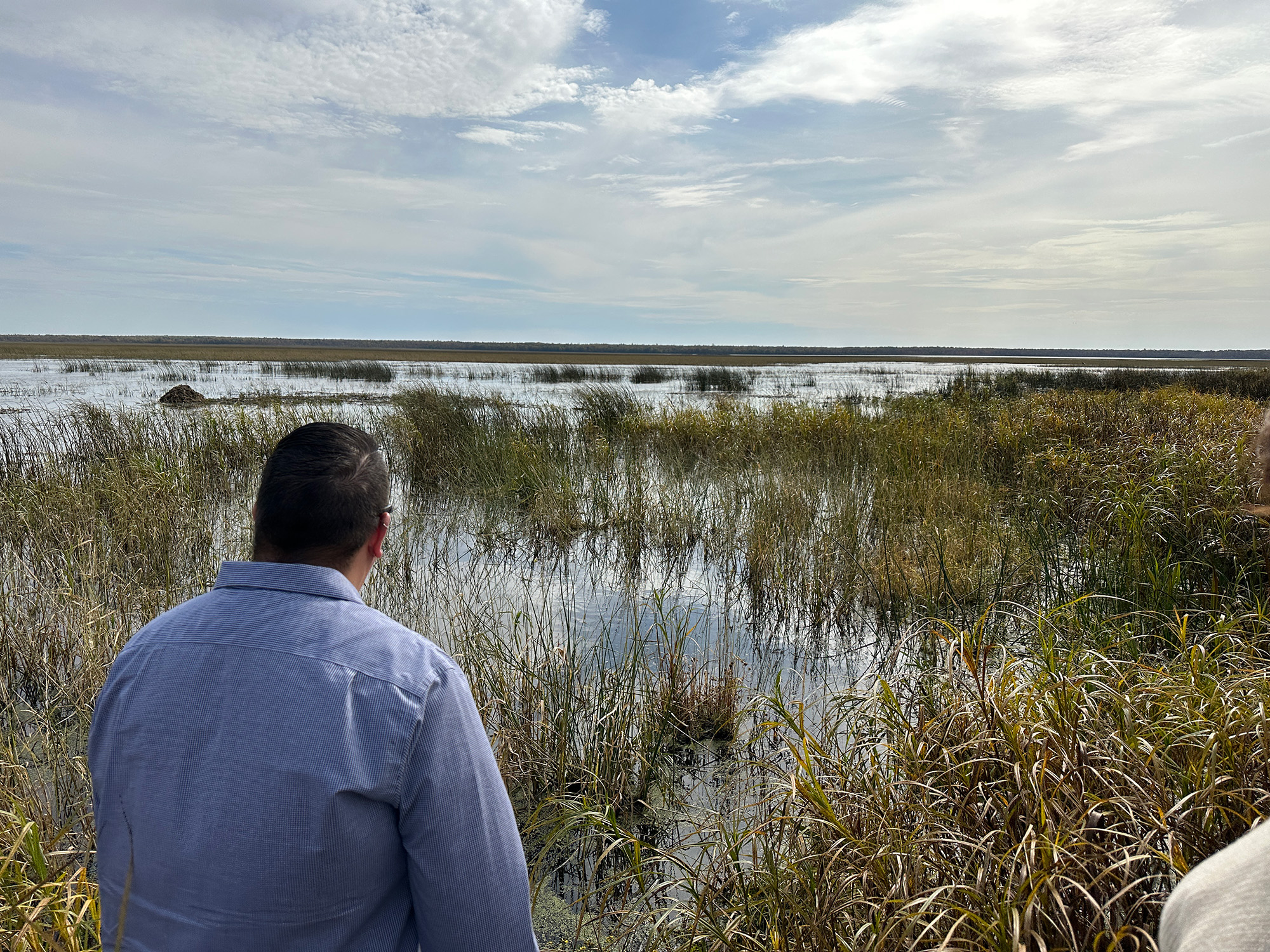Protecting the Mississippi River from the impacts of nickel mining

(Photo courtesy of Water Over Nickel)
There's a new threat to the Mississippi River in Minnesota. The Tamarack Mine is a proposed nickel-copper sulfide mine that would be built in Tamarack, Minnesota, roughly 120 miles north of St. Paul, in the St. Croix and Mississippi River watersheds.
No sulfide mine in the U.S. or Canada has operated long-term without polluting the watersheds, so FMR is seriously concerned about the potential negative consequences of this mine on the health of the Mississippi River and nearby communities, including the Mille Lacs Band of Ojibwe.
"Critical drinking water sources and aquatic habitats throughout the Mississippi and St. Croix River watersheds could be impacted by the pollution associated with nickel-sulfide mines," says Kelly Applegate, Commissioner of Natural Resources for the Mille Lacs Band of Ojibwe. "Minnesota is abundant with pristine and clean water resources, and they are not to be taken for granted."
Threats to water quality and the Mississippi River
The proposed project will mine nickel and copper through a process known as sulfide mining. In this type of mining, metals and material waste are taken from the ground and exposed to water. This can create sulfuric acid, which has the same chemical composition as battery acid and may result in acid mine drainage that would damage not only surface and groundwater supplies, but also aquatic life, plant life, cultural sites and more.
"In a water-rich environment like Minnesota, impacts to the health of our watersheds ripple out across the environment," explains Applegate. "Our pristine wetlands recharge drinking water for our communities. Interconnected wetlands carry water across the landscape and link to rivers, streams, lakes and groundwater flows."
Ninety percent of the Tamarack-area ore body is covered by water (wetlands, peat bogs and lakes). While project engineering can contain mine pollution in the short term, mine runoff may be an active threat for 500-1,000 years.
The mine may also pump out 2.3 million gallons of water per day to combat seepage, which could impact area ground and surface water levels. Pumped water would be contaminated and require treatment.
Significant risks to the Mille Lacs Band of Ojibwe's people
The Mille Lacs Band of Ojibwe and other nearby communities would be most impacted by the environmental consequences of the mine, posing a direct threat to environmental justice. The proposed mine is located only 1.3 miles from Round Lake and the homes of Mille Lacs Band of Ojibwe community members.
Manoomin (wild rice) is particularly sensitive to sulfate pollution. Manoomin is a vital cultural and nutritional resource of the Anishinaabe (Ojibwe) tribes in the area, which have fought for its protection. The area, Aitkin County, is home to some of the most productive Manoomin beds in the state and country.
The additional stress to Manoomin, medicinal plants and other cultural resources already impacted by climate change would prevent Mille Lacs Band members from fully practicing their culture and beliefs.
The proposed mine site also lies within the ceded territory of the Treaty of 1855.
Who's behind the proposal?
Talon Metals is the company seeking permission from the state to build the mine.
Talon Metals formed a joint venture for this project with Kennecott Exploration Company, a subsidiary of Rio Tinto, an international mining conglomerate with a track record of labor and human rights abuses and environmentally damaging practices.
The initial project application for the Tamarack Mine is for 447 acres, however, the company holds the mineral rights to 31,000 acres in the area. Tesla, Inc. and the U.S. Department of Energy also have a stake in the Tamarack Mine. The metals would supply electric vehicle batteries as part of the national push to increase domestic EV production.
A viable alternative to the Tamarack Mine is bolstering electronics waste (e-waste) and metals recycling. All metals are infinitely recyclable, yet Minnesota currently only captures 23.7% of electronic waste for recycling, while the rest goes into traditional waste streams.
Metal recycling has additional benefits — not only does it emit far fewer emissions than mining (e.g. 90% fewer greenhouse gas emissions to recycle nickel than to mine it), but it also reduces air and water quality pollution that results from the burning or leaching of disposed metals.
What the permit process looks like
In June 2023, Talon Metals submitted its proposal for the mine to the Minnesota Department of Natural Resources.
The DNR must prepare an Environmental Impact Statement. The first step in that process is to complete a scoping document or "environmental assessment worksheet" that will inform other approvals and permitting decisions.
Once the scope is finalized, the full EIS is prepared and assessed for adequacy. Once the EIS process is complete, Talon Nickel can apply for local, state and federal permits.
There will be a public comment period for the scoping document, plus additional public comment periods throughout the permitting process.
FMR's role, and how you can help
FMR is an official partner of Water Over Nickel, the Mille Lacs Band of Ojibwe's campaign to protect clean water, land and cultural resources from the negative impacts of mining.
Working with our partners, FMR will submit public comments and engage community advocates or River Guardians at each important step, for as long as this process may take.
Learn more about Water Over Nickel by watching the video below:
If you have questions about FMR's opposition to the negative consequences of the proposed Tamarack Mine, contact Grassroots Organizing Coordinator Jenna Hawkes (jhawkes@fmr.org).
Become a River Guardian
Sign up and we'll email you when important river issues arise. We make it quick and easy to contact decision-makers. River Guardians are also invited to special social hours and other events about legislative and metro river corridor issues.